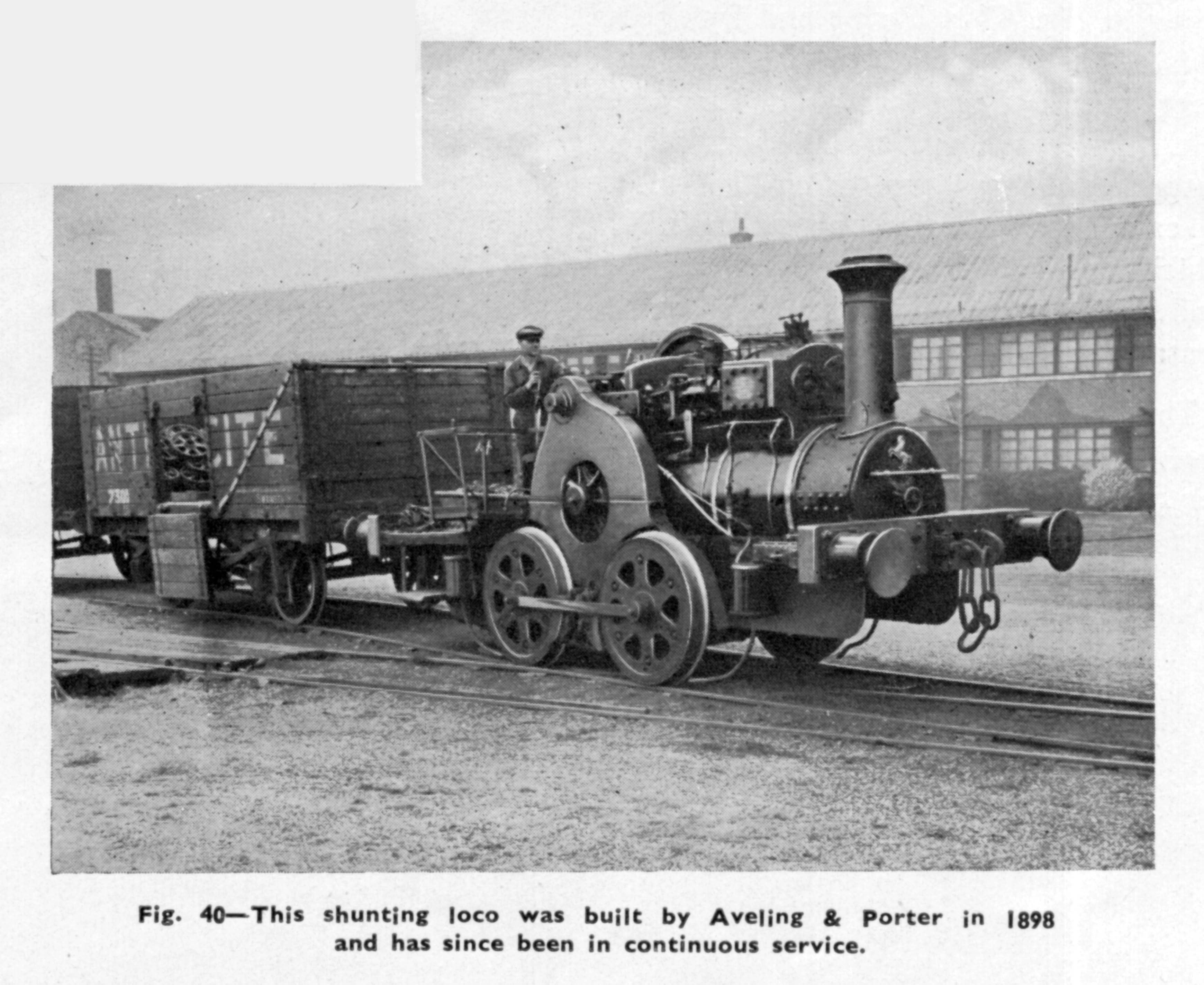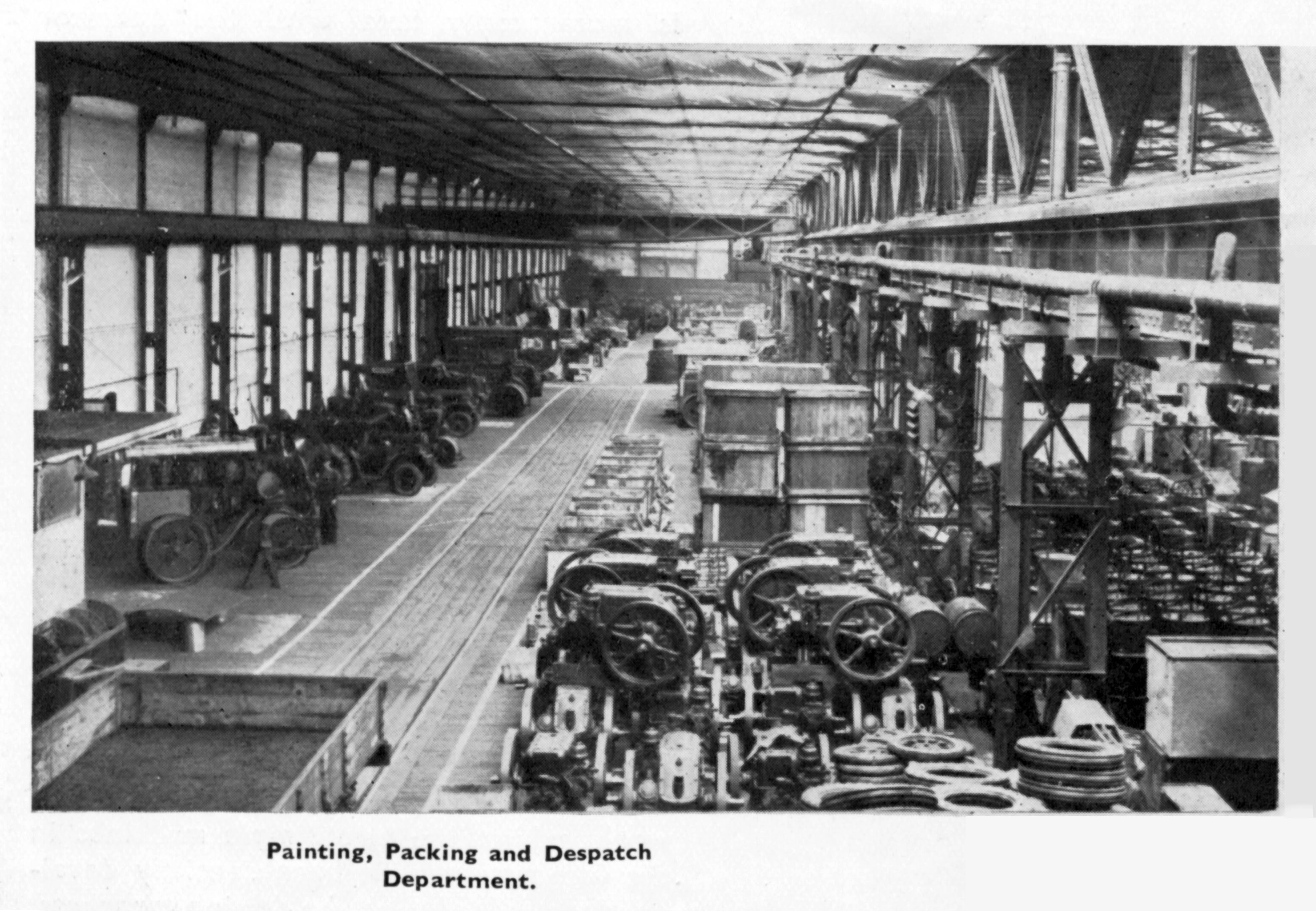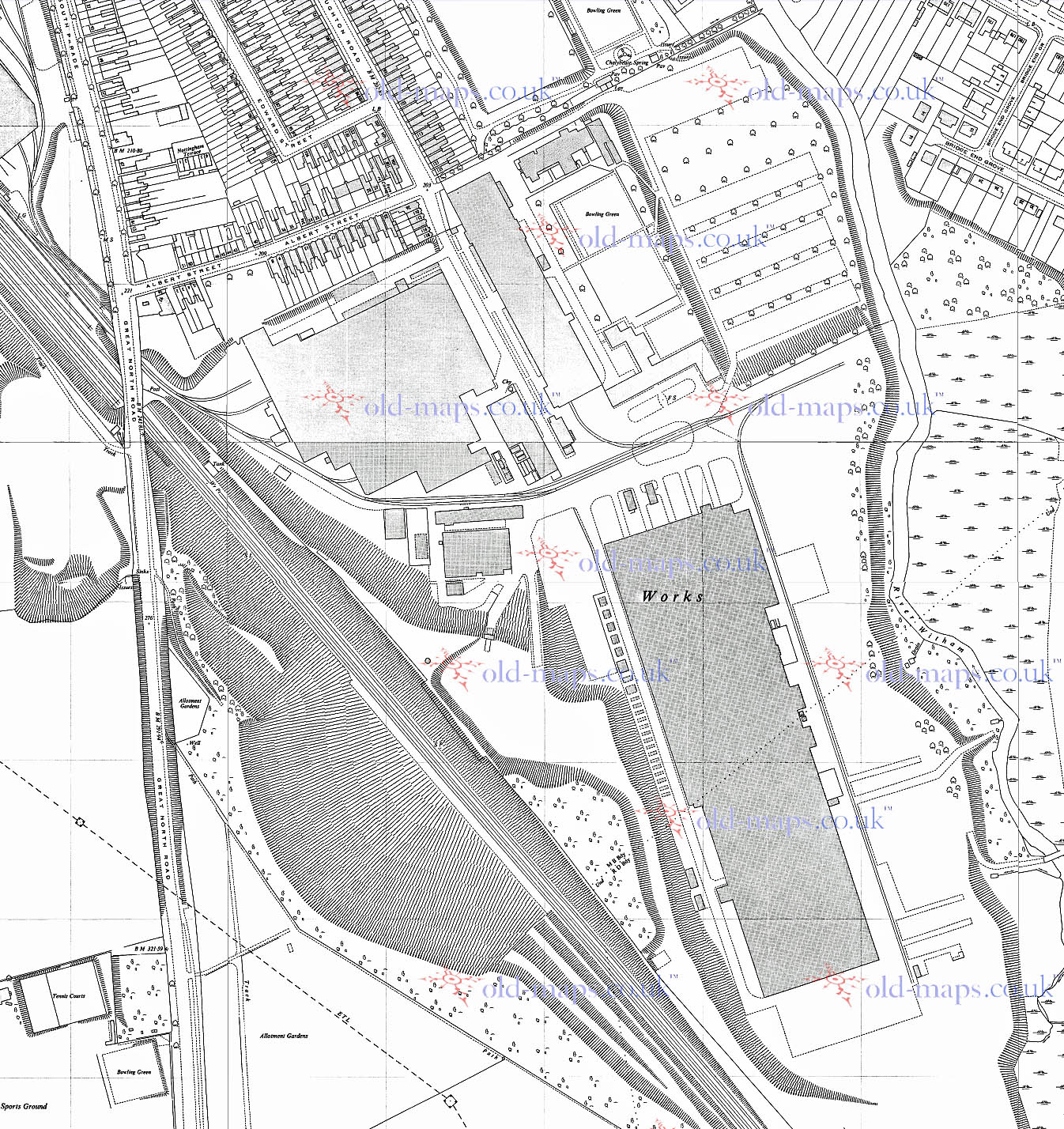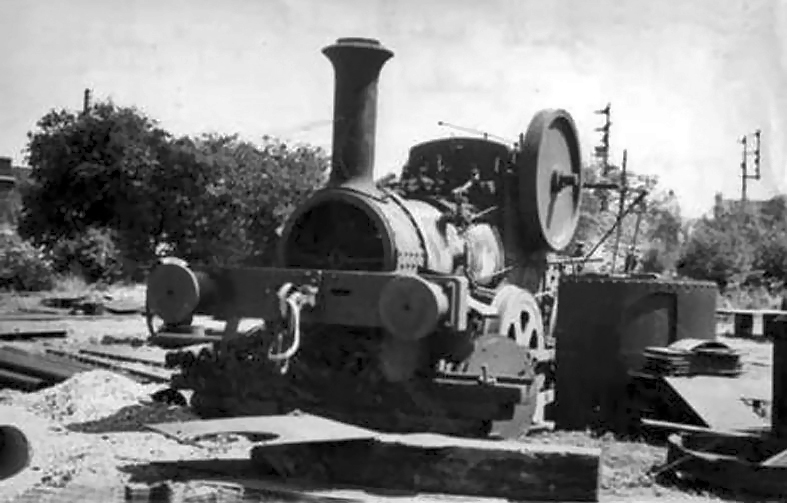Aveling-Barford relocated to Grantham during 1934. They were a new company formed by the amalgamation of Aveling & Porter of Rochester in Kent, manufacturers of road rollers and agricultural machinery including traction engines, and Barford & Perkins of Peterborough, also road roller makers who, in addition, supplied industrial cooking, dairy and disinfectant equipment. The move to Grantham saw the company begin to diversify their range, initially into dumper trucks for use on construction sites.
The entire plant and equipment of the works was moved to Grantham by rail. They brought with them from Rochester a works shunting locomotive which Aveling & Porter had built for their own use in 1898. So, from 1934 until around 1952, one of the smallest standard gauge steam locomotives in the country quietly went about its daily routine in a Grantham engineering works, a mere stone's throw from the East Coast Main Line.

From page 11 of a booklet The Works and Products of Aveling-Barford Ltd. Grantham reprinted from British Machine Tool Engineering, July-August-September 1942 issue. Discovery Museum Newcastle ref SE 7558.
While this engine may have appeared insignificant beside the express and main line locomotives of the adjacent LNER it had an advanced technical feature which few of them shared. It was a 'compound' engine, having separate high pressure and low pressure cylinders seen mounted above the boiler, just behind the rather elaborate chimney. The only compound engine seen on the main line at Grantham at this time was the unique Class W1 locomotive No. 10000.
Here is a photograph taken inside the works which demonstrates the importance attached to the rail connection for the depatch and distribution of products.


There is more about Aveling & Porter's tramway locomotives on the Industrial Railway Society's website.

This photograph was published on the Grantham Matters website on January 6th 2013.
Back to Private Industrial Sidings in the Grantham Area


The area in the Top left of the map known as South parade was connected to the same system. Before it was Aveling Barford the site was a foundry and tip for Ruston and Hornsby. The rail connection into South Parade also ran across a rail bridge on Springfield Road and into the Hornsby factory on London Road. This meant the Hornsby factory had two connections to the main line, one at South Parade and one to the up sidings at Spring gardens.
A lot of the rails are still in place at the Aveling site including the old weighbridge, but are beneath the Tarmac. The same is true of part of the Hornsby site behind what is now B and Q.
The Aveling Barford system was still in use when I was a kid in the mid sixties but I don't know what loco was in use then.
Hello Paul,
Thank you for filling out this extra detail. It's difficult to get hold of the details of industrial sidings because they were seldom recorded in the way that 'main line' systems often tend to be, so personal and local knowledge are especially valuable.
John Clayson